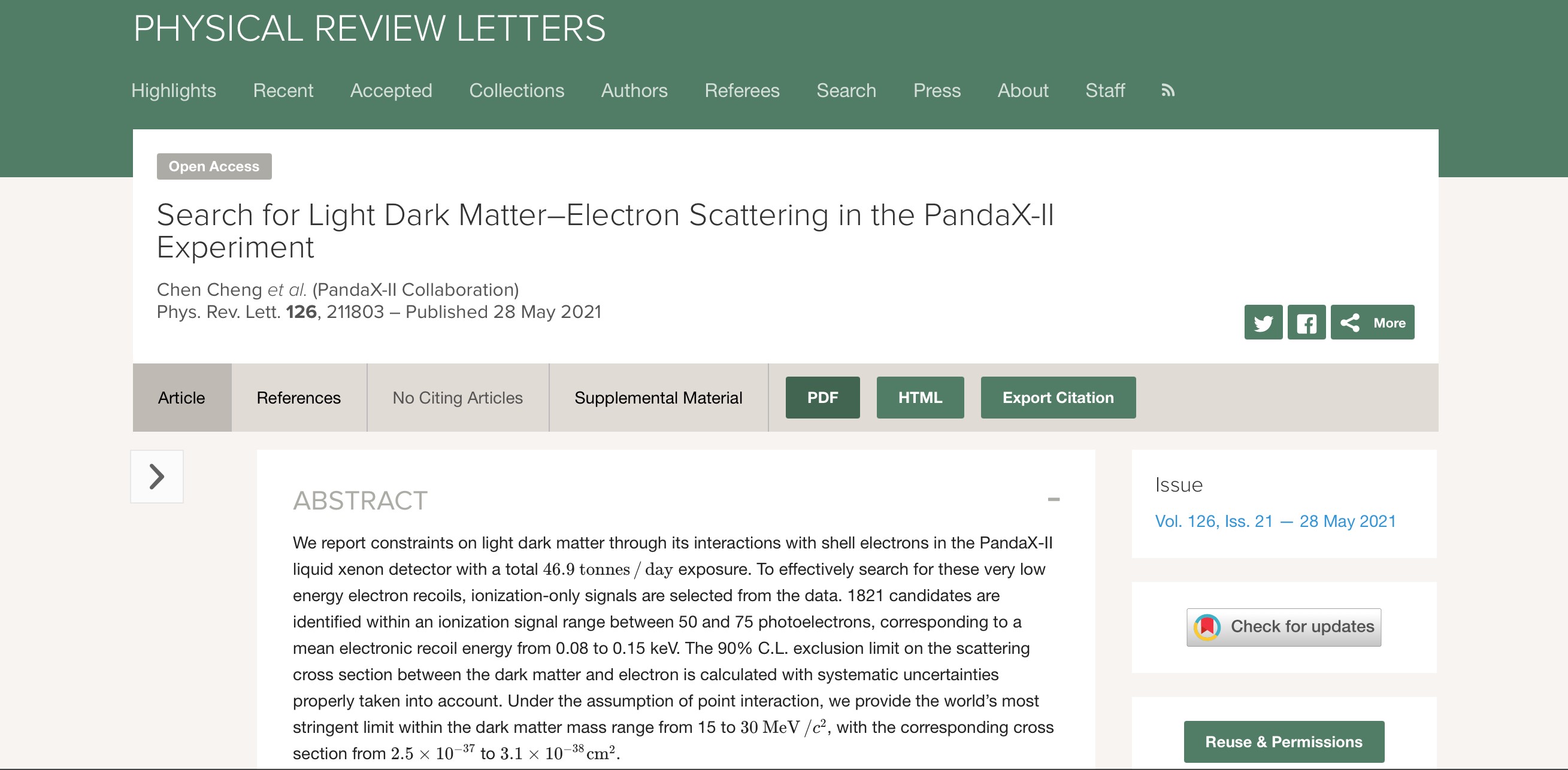
A new result on searching of light dark matter (DM) with PandaX-II experimental data was published online in Physical Review Letters on May 28, 2021 with a title Search for Light Dark Matter–Electron Scattering in the PandaX-II Experiment. This is the 6th PRL paper published with PandaX-II data.

In the last few decades, constraints on DM-nucleon scattering cross section with DM mass above GeV/c2 become stricter and stricter in the DM direct search experiments. However, sensitivity on DM and free electron scattering is still low because recoil energy is too low to detect. Recently, more theories state light DM could scatters with shell electrons with intial momentum to produce observable signals with recoil energy at keV level. PandaX-II adopted this atomic effect and analyzed ionization-only signals to reduce the analysis energy threshold to 80 eV to search light DM with mass between keV/c2 and GeV/c2 for the first time. PandaX-II liquid xenon detector effectively searchs for 1821 candidates with a total 46.9 tonne$\cdot$day exposure. We provide the world's most stringent limit within the dark matter mass range from 15 to 30~$\rm{MeV/c^2}$, with the corresponding cross section from $2.5\times10^{-37}$ to $3.1\times10^{-38}$ cm$^2$, see Fig. 1.

Fig. 1 90% C.L. upper limits on DM-electron scattering cross section from PandaX-II data
Dark matter occupies 27% of all matter in the unverise, much higher than ordinary matter with 5% occupancy. The nature of dark matter is one of the fundamental physics problems. In order to search and investigate DM, a newly built liquid xenon detector – PandaX-4T is in commissioning at the China Jinping Underground Laborary. Comparing with PandaX-II detector, PandaX-4T detector could perform lower detection threshold, lower radioactive background and larger expousure, leading to boost sensitivities of multiple DM candidates search in the near future.
The first authors are Chen Cheng who is a PhD candidate in the Sen-Yat Sun University and Pengwei Xie who is a postdoc in the Shanghai Jiao Tong University. The corresponding author is Yue Meng who is an assistant professor in the Shanghai Jiao Tong University. This project is supported in part by Office of Science and Technology, Shanghai Municipal Government, a grant from the Shanghai Jiao Tong University, a grant from the Ministry of Science and Technology of China, grants from National Science Foundation of China, the Shan Dong University, and a grant from Sichuan Science and Technology Program.
Physical Review Letters (Vol. 126, No. 21)
URL: https://link.aps.org/doi/10.1103/PhysRevLett.126.211803
DOI: 10.1103/PhysRevLett.126.211803




